Track Categories
The track category is the heading under which your abstract will be reviewed and later published in the conference printed matters if accepted. During the submission process, you will be asked to select one track category for your abstract.
Predisposition to tract infections (UTIs) in diabetes mellitus (DM) results from several factors. Susceptibility increases with longer period and greater severity of diabetes. High urine glucose content and defective host immune factors Leads to infection. Hyperglycemia causes neutrophil dysfunction which increasing in intracellular calcium levels and interfering with actin and, thus, diapedesis and phagocytosis. Vaginal candidiasis and vascular disease also play aKey role in recurrent infections.
Type 2 diabetes is a condition that impacts blood sugar control. A person can manage the condition by following a healthful diet and maintaining a healthy body weight. A ketogenic diet is a high-fat, moderate protein, very low-carbohydrate diet that may help some people in supporting blood sugar.
Obesity is a medical condition which results from the accumulation of excess fat within the body. Obesity is thought to trigger the changes to the body's metabolism. It adds pressure on body's ability to use insulin, to properly control blood sugar levels, and therefore they are more likely to develop diabetes. In addition abdominal fat influences fat cells to release ‘pro-inflammatory’ chemicals, which can reduce insulin sensitivity by disrupting the function of insulin responsive cells and their ability to respond to insulin. Obesity also causes pre-diabetes, a metabolic condition that almost always develops into type 2 diabetes.
Obesity has many causes such as gender, genes, age, psychological makeup, environmental factors and socioeconomic makeup. Certain medical conditions and medications can promote or cause obesity, although these are much less common causes of obesity than inactivity and overeating. Some examples of these are depression, certain medications (examples are antidepressants, control pills, steroids), Polycystic ovarian syndrome, Prader-Willi syndrome. The main goal of obesity treatment is to stay at a healthy weight. All weight-loss programs focus on physical activity and eating habits.
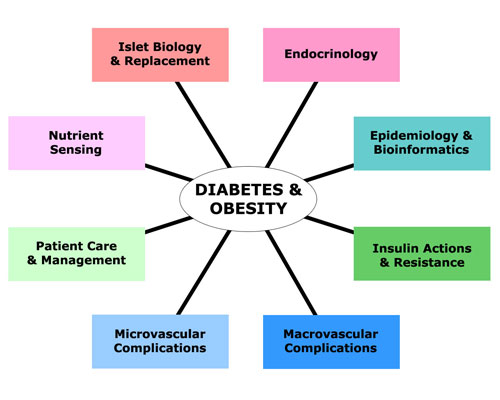
Recommended: - Diabetes conferences | obesity conferences | Endocrinology conferences | diabetes conferences 2019 |world congress on diabetes | diabetes meetings | endocrinology meetings | world diabetes congress |
Endocrinology is a perplexing investigation of the different hormones and their activities and disarranges in the body. Endocrine Glands are organs that make hormones. These are substances that control exercises in the body and effectively affect the digestion system, multiplication, nourishment retention and use, development and improvement and so on. Hormones likewise control the way a living being reacts to their environment and help by giving sufficient vitality to different capacities. Diabetes is brought about by diminished creation of insulin or by diminished capacity to utilize insulin. Insulin, the hormone delivered by the beta cells in the pancreas, permits (glucose) cells to have the capacity to utilize glucose. This hormone is fundamental for glucose to go from the blood to within the body cells. With deficient insulin, glucose develops in the circulatory system as opposed to going into the cells. The body can't utilize glucose for vitality in spite of the elevated amounts of glucose in the circulatory system. This causes the unreasonable thirst, pee, and appetite, which are the most widely recognized side effects of diabetes. The abundance sugar stays in the blood and is then evacuated by the kidneys. This sickness happens in a few structures, yet the most well-known are Type I Diabetes or Juvenile Onset Diabetes or Insulin-Dependent Diabetes Mellitus (IDDM), Type II or Non-Insulin Dependent Diabetes Mellitus (NIDDM), and Gestational.

Recommended: - Diabetes conferences | Obesity conferences | Endocrinology conferences | Diabetes conferences 2019 | World congress on diabetes | Diabetes meetings | Endocrinology meetings | World diabetes congress |
Endocrine disorders involve the body’s over- or under-production of certain hormones, while metabolic disorders affect the body’s ability to process certain nutrients and vitamins. Endocrine disorders include hypothyroidism, congenital adrenal hyperplasia, diseases of the parathyroid gland, diabetes mellitus, diseases of the adrenal glands (including Cushing’s syndrome and Addison’s disease), and ovarian dysfunction (including polycystic ovary syndrome), among others. Some examples of metabolic disorders include cystic fibrosis, phenylketonuria (PKU), hyperlipidaemia, gout, and rickets.
Endocrinology is a branch of biology and medicine dealing with the endocrine system, its diseases and its specific secretions known as hormones, growth promotion and malignancy. Behavioural endocrinology is the study of hormonal processes and neuroendocrine systems that influence or regulate behaviour. Endocrinology includes the wide area that not only affects our endocrine system, but also has effects on skin which shows indirectly involvement of dermatology.
Metabolic syndrome is a medical disorder results in formation of cluster of conditions that includes, increased blood pressure, high blood sugar, excess body fat around the waist, and abnormal cholesterol or triglyceride levels that occur together, increasing your risk of heart disease, stroke and diabetes. Metabolic syndrome is closely linked to overweight or obesity and inactivity and also linked to a condition called insulin resistance. Genetic factors influence each individual component of the syndrome, and the syndrome itself. Metabolic syndrome is also known as syndrome X, insulin resistance syndrome, or dysmetabolic syndrome.
Recommended: - Diabetes conferences | Obesity conferences | Endocrinology conferences | Diabetes conferences 2019 | World congress on diabetes | Diabetes meetings | Endocrinology meetings | World diabetes congress |
Diabetes mellitus is a group of metabolic diseases characterized by high blood sugar (glucose) levels that result from defects in insulin secretion, or its action, or both. Diabetes mellitus, commonly referred to as diabetes was first identified as a disease associated with "sweet urine," and excessive muscle loss in the ancient world. Elevated levels of blood glucose (hyperglycemia) lead to spillage of glucose into the urine, hence the term sweet urine. Diabetes is a chronic condition associated with abnormally high levels of sugar (glucose) in the blood. Insulin produced by the pancreas lowers blood glucose. Absence or insufficient production of insulin, or an inability of the body to properly use insulin causes diabetes.

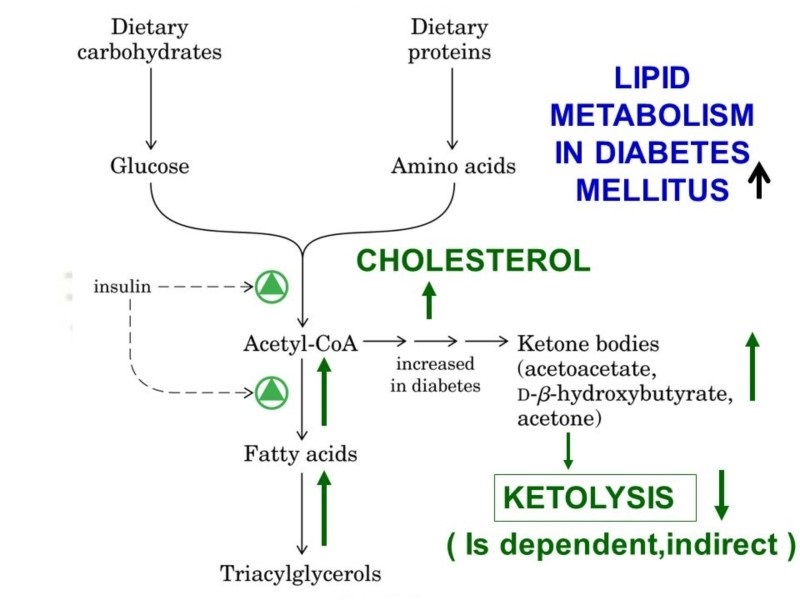
Recommended: - Diabetes conferences | Obesity conferences | Endocrinology conferences | Diabetes conferences 2019 | World congress on diabetes | Diabetes meetings | Endocrinology meetings | World diabetes congress |
The exocrine gland is degree organ placed behind the lower a vicinity of the abdomen, before of the spine and plays a awfully necessary 0.5 in hereditary disease. The exocrine gland is that the organ that produces internal secretion, one the foremost hormones that facilitate to manage aldose |blood sugar |glucose} levels by aiding the transport of aldohexose from the blood into neighboring cells. The cells that manufacture internal secretion ar beta cells. These cells ar distributed during a} very cluster of cells inside the exocrine gland. polygenic disease is very classified into two of} types- sort one hereditary disease type|and type|and kind} a pair of hereditary disease In sort one hereditary disease, the beta cells that manufacture internal secretion ar attacked by the body’s system. As extra beta cells get killed off, the exocrine gland struggles to produce enough hormones to remain glucose levels down and additionally the symptoms of hereditary disease begin to appear. Analysis has shown that whereas many beta cells ar killed off, the body can still manufacture very small amounts of internal secretion even once decades have passed. In type a try of hereditary disease, the body builds up resistance to internal secretion and also the extra internal secretion is needed to bring down aldohexose levels. As a result, the exocrine gland should manufacture extra internal secretion than it usually need to. If the exocrine gland can not manufacture enough hormones to bring down sugar levels, the symptoms of the hereditary disease will begin to appear. type a try of hereditary disease comes on step by step and it'll take up to years for symptoms to appear. extra development of type a try of hereditary disease can lead to loss of internal secretion producing beta cells from the exocrine gland which could lead to the requirement for the internal secretion to be administered.However oral hypoglycemic agent still remains a difficult and elusive goal.
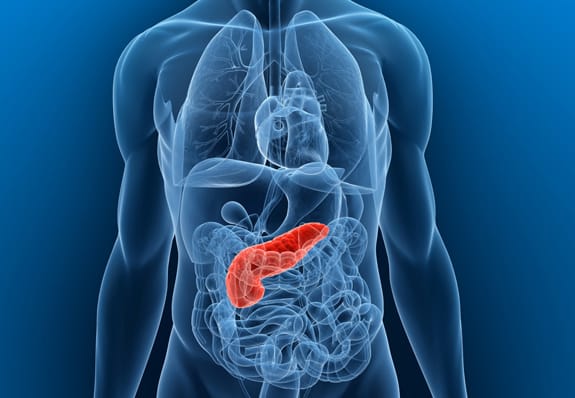
Recommended: - Diabetes conferences | Obesity conferences | Endocrinology conferences | Diabetes conferences 2019 | World congress on diabetes | Diabetes meetings | Endocrinology meetings | World diabetes congress |
Endocrine disorders can be classified according to the intensity of hormonal activity and according to the origin of endocrine disorder. From the intensity of hormonal activity of endocrine gland we can distinguish hyper function of endocrine gland, which is characterized by increased secretion of its hormone as well as by increased concentration of this hormone in circulating blood. If endocrine gland produces several kinds of hormones the symptoms resulting from hyper production or hypo production of more kinds of hormones may develop, respectively, at the same time the symptoms of hyper function resulting from overproduction of one kind of hormones and the symptoms of hypo function due to a deficiency of other kind of hormones can develop. Refunction of endocrine gland, which is in the time of medical examination characterized by normal secretion of its hormone as well as by normal concentration of this hormone in circulating blood. Endocrine disease results when a gland produces too much or too little of an endocrine hormone called as hormone imbalance.
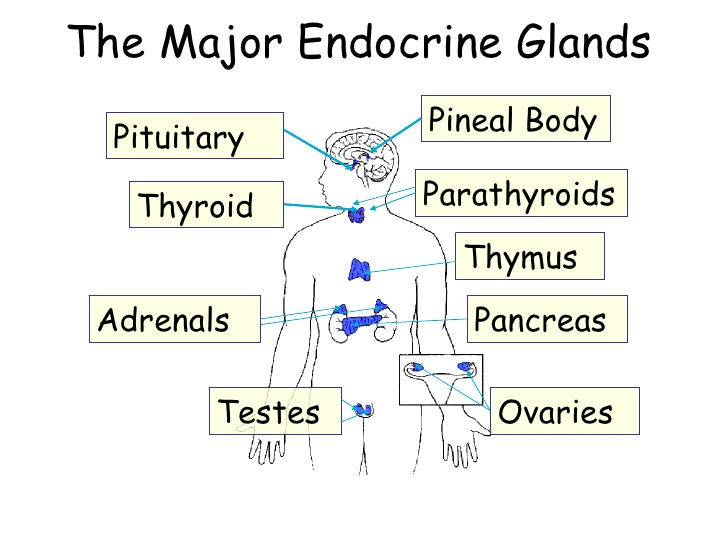
Endocrine disorders can be classified according to the intensity of hormonal activity and according to the origin of endocrine disorder. From the intensity of hormonal activity of endocrine gland we can distinguish Hyper function of endocrine gland, which is characterized by increased secretion of its hormone as well as by increased concentration of this hormone in circulating blood .Hypo function of endocrine gland, which is characterized by decreased secretion of its hormone as well as by decreased concentration of this hormone in circulating blood. If endocrine gland produces several kinds of hormones the symptoms resulting from hyper production or hypo production of more kinds of hormones may develop, respectively, at the same time the symptoms of hyper function resulting from overproduction of one kind of hormones and the symptoms of hypo function due to a deficiency of other kind of hormones can develop . Eufunction of endocrine gland, which is in the time of medical examination characterized by normal secretion of its hormone as well as by normal concentration of this hormone (these hormones)in circulating blood. Endocrine disease results when a gland produces too much or too little of an endocrine hormone called as hormone imbalance.
Recommended: - Diabetes conferences | Obesity conferences | Endocrinology conferences | Diabetes conferences 2019 | World congress on diabetes | Diabetes meetings | Endocrinology meetings | World diabetes congress |
Clinical trials are part of clinical research and at the heart of all medical advances. Clinical trials look at new ways to prevent, detect, or treat disease. Scientists are conducting research to learn more about diabetes.
Type 1 Diabetes TrialNet is an international network of researchers who are exploring ways to prevent, delay and reverse the progression of type 1 diabetes.
The Restoring Insulin Secretion study (RISE) includes 3 studies examining whether aggressive glucose lowering will lead to recovery of pancreas function in those with prediabetes.
The Biomarkers Consortium is a public-private biomedical research partnership managed by the Foundation for the National Institutes of Health that endeavors to discover, develop, and qualify biological markers (biomarkers) to support new drug development, preventive medicine, and medical diagnostics.

Case study is an important part for research and treatment. Clinical case study aims directly improve global health outcomes and share clinical knowledge using case reports to convey important best practice messages. If case study is done then the advanced medical technologies like transplantation, holistic treatment can be used more rapidly in hospitals and with the more study in Glycemic index and load we can find the diseases or problem like Cortisol . Even with this, we can know the number of people by using Diabetes Statistics having diseases and can find by advances in diabetes cure. Drug mechanism can be known and along with these new technologies as well pharmacotherapy can be done. Clinical case study done in medical diabetes could leads to find innovative way for treating the diabetes.
Diabetes case reports are in-depth inquiries of an individual, crowd, occasion or public. The data are assembled from a diversity of places by various methods.The case study technique encompasses spotting what happens to, or reconstructing ‘the case history’ of a single participant or group of individuals, i.e the idiographic approach. Case studies permits an investigator to investigate a topic in far more detailed and minute way.The case study is not itself a research method, but investigators choose methods of data collection and analysis that will generate material suitable for case studies. Most of this evidence is likely to be qualitative but the psychologist might collect numerical data as well and present in various diabetes conference and scientific sessions.
Recommended: - Diabetes conferences | Obesity conferences | Endocrinology conferences | Diabetes conferences 2019 | World congress on diabetes | Diabetes meetings | Endocrinology meetings | World diabetes congress |
Diabetes is a prime risk factor for cardiovascular disease (CVD). Vascular disorders include retinopathy and nephropathy, peripheral vascular disease (PVD), stroke, and coronary artery disease (CAD). Diabetes also affects the heart muscle, causing both systolic and diastolic heart failure. Diabetes is a prime risk factor for cardiovascular disease (CVD). Vascular disorders include retinopathy and nephropathy, peripheral vascular disease (PVD), stroke, and coronary artery disease (CAD). Diabetes also affects the heart muscle, causing both systolic and diastolic heart failure. Cardiovascular disease and diabetes have emerged as major public health problems, both as distinct clinical entities and as comorbid conditions. As a result, the fields of vascular biology and endocrinology are working more closely now than ever before.
Recommended: - Diabetes conferences | Obesity conferences | Endocrinology conferences | Diabetes conferences 2019 | World congress on diabetes | Diabetes meetings | Endocrinology meetings | World diabetes congress |
Nanotechnology holds a great deal of promise for the world of medicine. It is likely that some of the first truly revolutionary changes noticeable in our everyday lives will be brought about by Nano-medicine. the possibilities of Nano-medicine include Nano formulations for efficient drug delivery, smart drugs which only activate when needed, engineered microbes which produce human hormones, and even "Nano robots", which would move autonomously around the body acting as a boost, or a replacement, for our immune system, red blood cells, or many other biological systems. While many of these applications of nanotechnology as a long way off, there is a great deal of active research into medical technology - much of which is not very far-fetched. This article explores the way in which nanotechnology could be used to effectively treat, and possibly cure, diabetes - in particular Type 1 diabetes.

Recommended: - Diabetes conferences | Obesity conferences | Endocrinology conferences | Diabetes conferences 2019 | World congress on diabetes | Diabetes meetings | Endocrinology meetings | World diabetes congress |
Diabetic nephropathy is the disease/ damaged caused by diabetes to your kidney, which in severe cases can lead to kidney failure. The waste from our blood is filtered by the tiny blood vessels present in our kidney, they can be destroyed by high blood sugar level in our body. The body retains excess water and salts than required leading to weight gain and ankle swelling. This leads to malfunction or kidney failure in later stages. No symptoms are shown in earlier stages so, regular urine tests are required to detect any kidney damage. Diabetes may also lead to damage to nerves, which can lead to difficulty in emptying your bladder and creating pressure injuring your kidney. Long time retention of urine in bladder leads to infections as bacterial growth in urine with high blood sugar level is high. About 30% of patients with Type 1 diabetes and 10 to 40 % of those with Type 2 diabetes gradually will suffer from kidney failure.

Recommended: - Diabetes conferences | Obesity conferences | Endocrinology conferences | Diabetes conferences 2019 | World congress on diabetes | Diabetes meetings | Endocrinology meetings | World diabetes congress |
Bariatric surgery (weight loss surgery) includes a variety of procedures performed on people who have obesity. Weight loss is achieved by reducing the size of the stomach with a gastric band or through removal of a portion of the stomach (sleeve gastrectomy or biliopancreatic diversion with duodenal switch) or by resecting and re-routing the small intestine to a small stomach pouch (gastric bypass surgery).
Long-term studies show the procedures cause significant long-term loss of weight, recovery from diabetes, improvement in cardiovascular risk factors, and a mortality reduction from 40% to 23%. Bariatric surgery for obese people with a body mass index (BMI) of at least 40, and for people with BMI of at least 35 and serious coexisting medical conditions such as diabetes. However, research is emerging that suggests bariatric surgery could be appropriate for those with a BMI of 35 to 40 with no comorbidities or a BMI of 30 to 35 with significant comorbidities. Metabolic & Bariatric Surgery guidelines suggest the position statement on consensus for BMI as an indication for bariatric surgery. Bariatric surgical procedures cause weight loss by restricting the amount of food the stomach can hold, causing malabsorption of nutrients, or by a combination of both gastric restriction and malabsorption. Bariatric procedures also often cause hormonal changes.
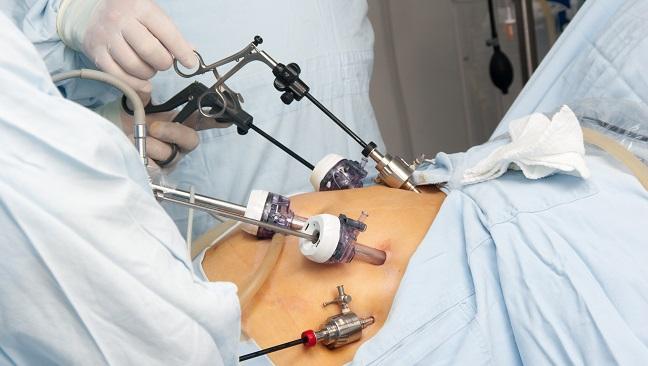
Recommended: - Diabetes conferences | Obesity conferences | Endocrinology conferences | Diabetes conferences 2019 | World congress on diabetes | Diabetes meetings | Endocrinology meetings | World diabetes congress |
Achieving ideal glycemic control in children and adolescents with diabetes remains a major challenge. The Management of diabetes requires an age-explicit methodology, considering the necessities and characteristics related to specific developmental stages. Variable eating patterns and physical activity, along with limited ability impart symptoms of hypoglycemia/hyperglycemia are the principle challenges in youngsters.In adolescents, changes in insulin sensitivity identified with physical development and pubertal hormonal changes, mental and behavioural issues and poor compliance can entangle diabetes management. Additional factors in youngsters with diabetes include family dynamics, wellbeing status and care outside home.

Pediatric Endocrinology is a subspecialty of pediatrics dealing with metabolic and endocrine disorders in children. The most common disease of the speciality is type 1 diabetes , which usually accounts for at least 50% of a typical clinical practice. The next most common problem is growth disorders , especially those amenable to growth hormone treatment. Pediatric endocrinologists are usually the primary physicians involved in the medical care of infants and children with intersex disorders. It also deals with hypoglycaemia and other forms of hyperglycemia in childhood, variations of puberty as well other adrenal, thyroid and pituitary problems.
Recommended: - Diabetes conferences | Obesity conferences | Endocrinology conferences | Diabetes conferences 2019 | World congress on diabetes | Diabetes meetings | Endocrinology meetings | World diabetes congress |
Physical exercise has been considered as one of the foundations in the treatment of diabetes mellitus alongside sustenance and medicine since from the previous 100 years back. Diabetes mellitus, an interminable metabolic illness, is portrayed by an expansion in the blood-glucose level coming about because of a relative insulin inadequacy or insulin obstruction or both. As an outcome, it can prompt glycation of tissues, which continues with intense metabolic aggravations and closures with organ harm with extreme wellbeing disintegrations. Research examines throughout the years, revealed that the overall pervasiveness of diabetes mellitus gives off an impression of being expanding alarmingly. It is assessed that 5.4% of complete populace would be influenced with the illness continuously 2025 as beginning reports demonstrated 4.0% in the year 1995. In this way, appropriate administration ought to be done so as to treat diabetes mellitus and its confusions.

Recommended: - Diabetes conferences | Obesity conferences | Endocrinology conferences | Diabetes conferences 2019 | World congress on diabetes | Diabetes meetings | Endocrinology meetings | World diabetes congress |
In most cases of stem cell therapy, using one's own stem cells is more helpful for the exocrine gland to regenerate and boost its ability to produce insulin. Procedure continues to achieve success, with patients experiencing health advantages even six months after stem cell diabetes treatment. Repeated applications of adipose stem cells is one of the most effective treatment for type two diabetes, providing an open window to create dietary changes, supplementation and exercise much more effective for long-term management of blood glucose.. Adult stem cells, undifferentiated and adaptable, area unit ready to transform into the cells of innumerable organs and structures inside the body.

Swiss Medical Clinic has developed the Adult autologous stem cell medical care program to treat a range of conditions. Throughout stem cell treatment a patient receives 200 – 300 million stem cells. The number of restored cells not only covers daily losses, however exceeds them 1000 times. Thus, the reserve of the stem cells, much lost for the newest 15 – 20 years, is restored. When such active cell filling, organ gets rejuvenated and revived, because the new and active cells displace the previous and broken ones.
Recommended: - Diabetes conferences | Obesity conferences | Endocrinology conferences | Diabetes conferences 2019 | World congress on diabetes | Diabetes meetings | Endocrinology meetings | World diabetes congress |
Diabetic retinopathy is a polygenic disorder complication that affects eyes. It's caused by injury to the blood vessels of the sensitive tissue at the rear of the attention (retina).
At first, diabetic retinopathy might cause no symptoms or solely delicate vision issues. Eventually, it will cause cecity.
The condition can develop in anyone who has type 1 or type 2 diabetes. The longer you have got diabetes and therefore the less controlled your glucose is, the more prone you're to develop this eye complication.

Recommended: - Diabetes conferences | Obesity conferences | Endocrinology conferences | Diabetes conferences 2019 | World congress on diabetes | Diabetes meetings | Endocrinology meetings | World diabetes congress |
Obesity not only increases the cardiovascular risks but it damages more than just the heart and blood system. It is also the major cause of bile stones, osteoarthritis and respiratory problems. Obesity closely interferes with many health conditions that underlie cardiovascular disease, including high blood pressure, diabetes and abnormal blood cholesterol. Additionally, weight gain is a frequent consequence of a heart-damaging lifestyle such as lack of exercise and a fat diet. Obesity can also lead to Cardiac arrest. This is a serious condition when the heart is unable to pump enough amount of blood to satisfy the body’s requirement. Diabetic persons are at increased risk of cardiovascular diseases. One can reduce the risk by maintaining blood glucose levels (also called blood sugar), blood pressure and blood cholesterol levels close to the recommended target values ​​- levels suggested by diabetes professionals for good health. Stroke and coronary heart disease can be caused by the same problem - atherosclerosis.
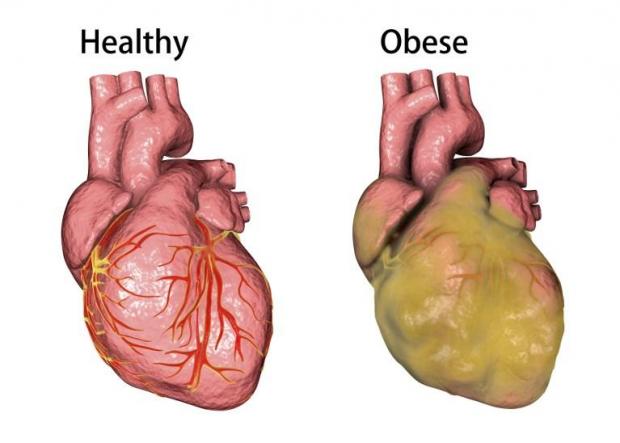
Recommended: - Diabetes conferences | Obesity conferences | Endocrinology conferences | Diabetes conferences 2019 | World congress on diabetes | Diabetes meetings | Endocrinology meetings | World diabetes congress |
Obesity is the most challenging health problems in the 21st century and one of the most common non-communicable diseases globally. obesity has also become a world-wide epidemic. Obesity is a risk factor for the development of insulin resistance, with pancreatic beta cells compensating for insulin resistance by augmenting insulin secretion. The failure of beta-cells is believed to cause pre-diabetes, a condition that can lead to diabetes". Approximately 85% of people with diabetes are type 2, and of these, 90% are obese or overweight. obesity are major contributors to various other chronic diseases such as coronary artery diseases, myocardial infarction, hypertension, dyslipidemia and a number of other complicated disorders.

Recommended: - Diabetes conferences | Obesity conferences | Endocrinology conferences | Diabetes conferences 2019 | World congress on diabetes | Diabetes meetings | Endocrinology meetings | World diabetes congress |
Diabetes and cancer are two of the biggest threats with tremendous impact to humans during this decade. However scientists are yet to prove a relation between the two. Recent studies show some evidences however not definite proofs that some diabetes treatment methods increases the danger of cancer. Instances from the recent studies includes anti-diabetics, the foremost usually used anti-diabetic drug, appears to lower cancer risk. however there is conjointly proof from some studies conducted by others that hypoglycemic agent, notably long hypoglycemic agent glargine (Lantus), could increase cancer risk. Evidences conjointly embody empirical studies suggesting that some medications wont to treat hyperglycaemia area unit related to either increased or reduced risk of cancer. Adding to the present bound treatments of willcer like therapy and use of glucocorticoids can increase difficulties in achieving smart polygenic disorder management, For this reason, doses of therapy may have to be reduced and glucocorticoids and steroids doses administered through the day instead of in larger, less frequent doses. Nausea and vomit will cause further management difficulties in individuals with polygenic disorder, notably if sturdy anti-hyperglycemic medication is taken, like hypoglycemic agent. Professionals counsel Healthful diets, physical activity, and weight management because the best ways that to cut back risks.

Recommended: - Diabetes conferences | Obesity conferences | Endocrinology conferences | Diabetes conferences 2019 | World congress on diabetes | Diabetes meetings | Endocrinology meetings | World diabetes congress |
Though there’s also a genetic role in Type 2 diabetes but researchers say poor diet choices and lower levels of physical activity increase the risk for obesity, are the most powerful determinant of Type 2 diabetes in childhood, adolescence and young adulthood
For type 1 diabetes patients young adulthood represents a critical period of risk for those with. Only 17% of early young adults (ages 18–25) and 30% of late young adults (ages 26–30) with type 1 diabetes meet current recommendations for glycemic control (i.e. HbA1c ≤7.0%). Longitudinal studies suggest that up to 50% of young adults with type 1 diabetes develop diabetes-related complications in their 20s, including retinopathy, neuropathy, and hypertension. Young adults with type 1 diabetes are also at disproportionate risk for overweight or obesity, which poses additional health risks. Women generally report a higher rate of complications than men. Young adults with type 1 diabetes, particularly those diagnosed in early childhood and with a history of significant hypoglycemia or hyperglycemia, are at a slightly increased risk for difficulties with working memory and attention

Recommended: - Diabetes conferences | Obesity conferences | Endocrinology conferences | Diabetes conferences 2019 | World congress on diabetes | Diabetes meetings | Endocrinology meetings | World diabetes congress |
Gestational diabetes mellitus (GDM) is defined as hyperglycaemia that is diagnosed for the first time in the second or third trimester of pregnancy. It occurs in one in seven pregnancies worldwide and is associated with increased risk of adverse perinatal outcome, in particular, infant birth weight that is large for gestational age, increased infant adiposity, preeclampsia and preterm delivery, and increased delivery by caesarean section. This review focuses on the controversy regarding screening and diagnosis of GDM following development of the International Association of Diabetes and Pregnancy Study Groups (IADPSG) guidelines and the National Institute of Clinical Excellence (NICE) 2015 guidelines. It reviews the most recent research in to diet and exercise modification in prevention and management of GDM, pharmacological management and post-partum management to delay and/or prevent progression to type 2 diabetes.

Recommended: - Diabetes conferences | Obesity conferences | Endocrinology conferences | Diabetes conferences 2019 | World congress on diabetes | Diabetes meetings | Endocrinology meetings | World diabetes congress |
The harm caused to nerves by diabetes is called Diabetic neuropathy. The primary driver of this harm is the weight created because of high blood glucose levels in the blood for quite a while and elevated amounts of fats, for example, triglycerides in the blood. Manifestations fluctuate with the sort of diabetic neuropathy.
Mainly diabetic neuropathy is divided into four varieties. the foremost common kind is Peripheral neuropathy that chiefly affects the feet and legs 1st, followed by the hands and arms. Involuntary neuropathy that is majorly found within the involuntary system that controls the center, bladder, stomach, intestines, sex organs and eyes. this will cause issues like hypoglycaemia unknowingness, gastro paralysis, etc. Radiculoplexus neuropathy that is additionally referred to as diabetic amyotrophia. It affects nerves within the thighs, hips, buttocks or legs. It's a lot of common in individuals with kind a pair of polygenic disorder and older adults. different names for this kind ar diabetic amyotrophia, leg bone pathology or proximal pathology. neuropathy, conjointly renowned focal pathology, could be a short term downside that may bring injury to a selected nerve within the face, middle of the body (torso) or leg. It incomes suddenly and may cause severe pain. It's most typical in older adults.
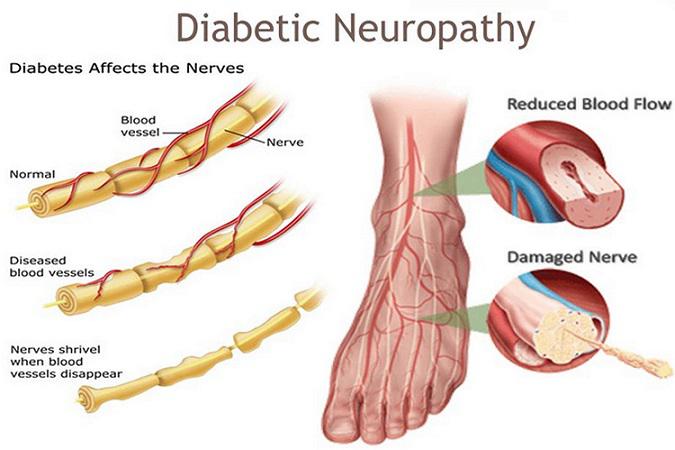
Recommended: - Diabetes conferences | Obesity conferences | Endocrinology conferences | Diabetes conferences 2019 | World congress on diabetes | Diabetes meetings | Endocrinology meetings | World diabetes congress |
Dementia is majorly known as a cognitive disorder in which a person is mentally affected that is a person’s brain is affected. On a long term run he gradually loses his ability to think and remember, its affect is great enough to disturb a person's daily functioning. Other common symptoms include emotional problems, difficulties with language, and a decrease in motivation. Alzheimer's disease is the most common type of dementia constituting upto 50% - 70% of cases. Other common types include vascular dementia (25%), Lewy body dementia (15%), and frontotemporal dementia. Less common causes include normal pressure hydrocephalus, Parkinson's disease dementia, syphilis, and Creutzfeldt–Jakob disease among others. One person can have more than one type of dementia. Some researches states that Type 2 diabetes patients have a higher risk of getting affected with Alzheimer’s disease, the most common type of dementia on long term. Although no researches till now is able to prove how Alzheimer’s and diabetes are connected. Apart from that professional’s states they have proven cases of Diabetes raising the risk of cardiac diseases and stroke, which affects the heart and blood vessels. Damaged blood vessels in the central nervous system may contribute to Alzheimer’s disease. The brain depends on many different chemicals, which may be unbalanced by too much insulin. Some of these changes may help trigger Alzheimer’s disease. High blood sugar causes inflammation. This may damage brain cells and help Alzheimer’s to develop.
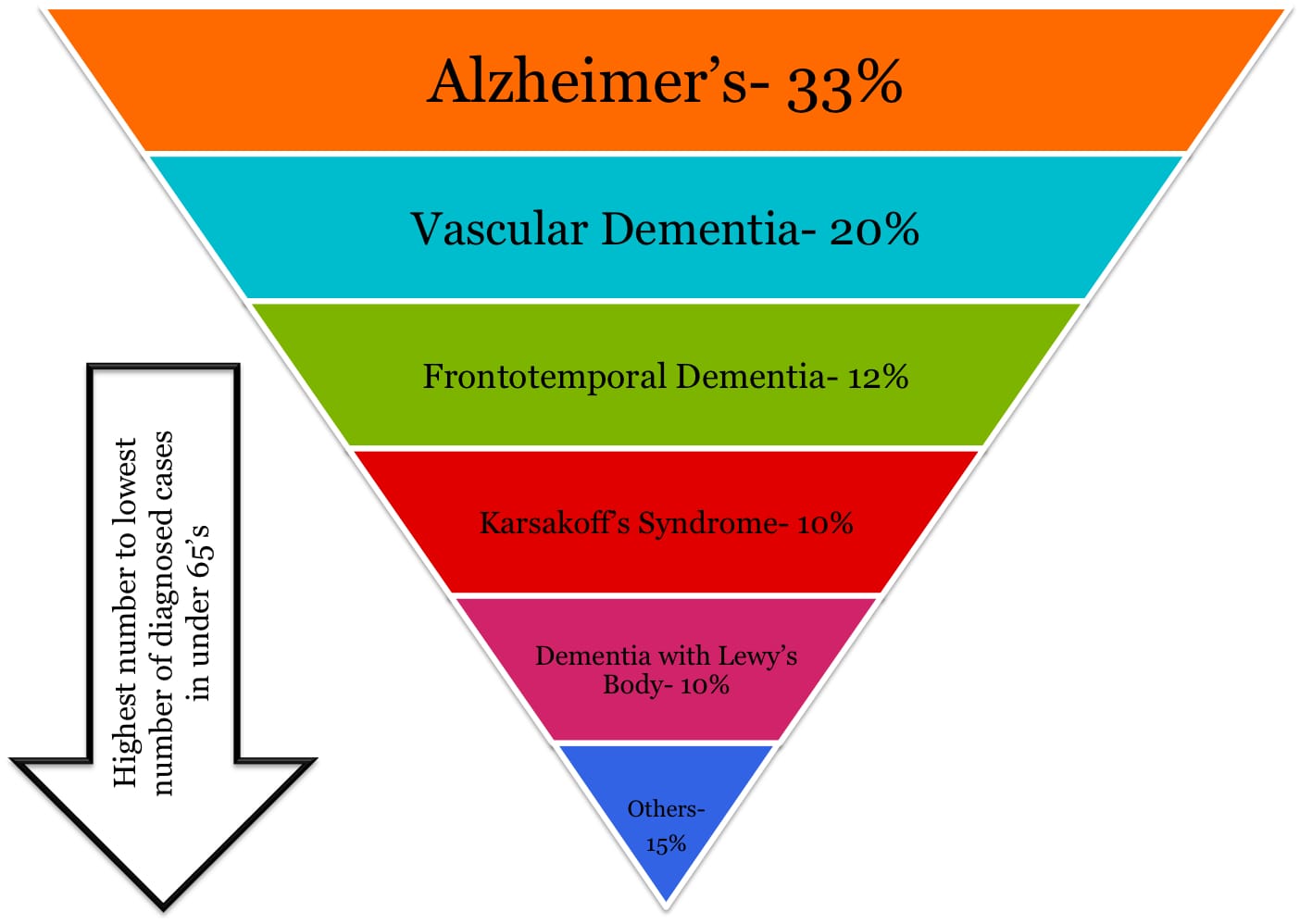
Recommended: - Diabetes conferences | Obesity conferences | Endocrinology conferences | Diabetes conferences 2019 | World congress on diabetes | Diabetes meetings | Endocrinology meetings | World diabetes congress |
Wound recuperating gets moderate in diabetic patients because of various factors, for example, High glucose levels (When your glucose level is higher than ordinary, it keeps supplements and oxygen from invigorating cells which keeps your resistant framework from working effectively and in the long run builds aggravation in the body's cells. Neuropathy (This is the harm caused to the nerve cells because of consistent high glucose levels. This may prompted lose sensation in the influenced regions. Usually in the hands and feet of the diabetic patients. When it occurs, one will be unable to feel wounds when they happen. This is one noteworthy motivation behind why foot wounds have a tendency to be more typical in individuals with diabetes. Poor course (Diabetes impacts the veins and limits them down which diminishes the blood stream rate) Immune framework lack (Diabetes lessens the invulnerable arrangement of the body and the patient gets more inclined to the assault of pathogens and contaminations.)

Recommended: - Diabetes conferences | Obesity conferences | Endocrinology conferences | Diabetes conferences 2019 | World congress on diabetes | Diabetes meetings | Endocrinology meetings | World diabetes congress |
The main aim of diabetes management is to bring the carbohydrate metabolism to normal state. In order to achieve it patients with insulin deficiency are with insulin injections or pumps and patients with insulin resistance are treated with proper diet maintenance and exercise. The other complication caused due to other disease are to be treated or prevented. Maintaining a healthy diet is best to have a healthy living with or without diabetes.
Diabetes is a main factor for cardiovascular disease, development of other secondary conditions. Regular check-ups on blood pressure, cholesterol, LDL, HDL and triglyceride levels, eye examination to prevent diabetic retinopathy, foot care specialist is better to prevent diabetes occurrence.
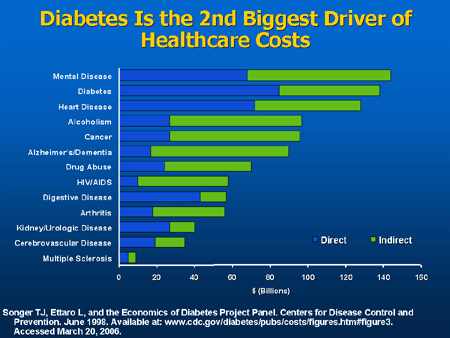
Recommended: - Diabetes conferences | Obesity conferences | Endocrinology conferences | Diabetes conferences 2019 | World congress on diabetes | Diabetes meetings | Endocrinology meetings | World diabetes congress |
The major of mental health issues include -
Depression -
Depression is a medical unhealthiness that causes feelings of unhappiness and sometimes a loss of interest in activities you once relished. It will get within the approach of however well you perform at work and home, together with taking care of your diabetes. Once you aren’t able to manage your diabetes well, your risk goes up for diabetes complications like heart condition and nerve injury.
People with diabetes are two to three times more prone to own depression than the ones without diabtes. Solely (25-50)% of individuals with diabetes have depression get diagnosed and treated. however treatment—therapy, medicine, or both—is typically terribly effective. And while not treatment, depression usually gets worse, not better.
Stress and anxiety-
Stress is an element of life, from traffic jams to family demands to everyday polygenic disease care. you'll be able to feel stress as AN feeling, like worry or anger, as a physical reaction like sweating or a athletics heart, or both.
If you’re stressed, you'll not take nearly as good care of yourself as was common. Your blood glucose levels will be affected too—stress hormones create blood glucose rise or fall erratically, and stress from being sick or separated will create your blood glucose go up. Being stressed for an extended time will cause different health issues or create them worse.
Anxiety—feelings of worry, fear, or being on edge—is however your mind and body react to worry. folks with polygenic disease ar two hundredth additional doubtless than those while not polygenic disease to own anxiety at some purpose in their life. Managing a long-run condition like polygenic disease could be a major supply of tension for a few.
Studies show that medical care for anxiety typically works higher than medication, however generally each along works best.
Diabetes Distress-
You may generally feel discouraged, worried, frustrated, or bored with coping with daily polygenic disease care, like polygenic disease is dominant you rather than the opposite approach around. perhaps you’ve been attempting onerous however not seeing results. Or you’ve developed a unhealthiness associated with polygenic disease in spite of your best efforts.
Those overwhelming feelings, referred to as polygenic disease distress, could cause you to slide into unhealthy habits, stop checking your blood glucose, even skip doctor’s appointments. It happens to many—if not most—people with polygenic disease, usually once years of excellent management. In any 18-month amount, thirty third to five hundredth of individuals with polygenic disease have polygenic disease distress.
Diabetes distress will seem like depression or anxiety, however it can’t be treated effectively with medication

Recommended: - Diabetes conferences | Obesity conferences | Endocrinology conferences | Diabetes conferences 2019 | World congress on diabetes | Diabetes meetings | Endocrinology meetings | World diabetes congress |
The concept of 'new technologies' for type 1 diabetes and new discovery and advanced type 2 diabetes treatment has expanded in recent years at a rate that some might consider comparable to 'Moore’s Law', and the sheer number of new technologies entering into the type 1 diabetes marketplace is also growing at a remarkable rate. From the patient’s perspective, this is not only exciting but can lead to a sense of optimism. Technologies that today are growing commonplace. come under new therapeutic mechanisms of diabetes. Indeed, it could be argued that the major advances in type 1 diabetes care made within the last quarter of a century have come from technology rather than biology. At the same time, not all new technologies succeed, regardless of their purported promise. Both type 1 diabetes patients and their healthcare providers will soon see a series of further advanced medical technologies used in hospital and new technologies and novel therapies in diabetes treatment whose basis is tied to the notion of improving the lives of those with the disease.

Recommended: - Diabetes conferences | Obesity conferences | Endocrinology conferences | Diabetes conferences 2019 | World congress on diabetes | Diabetes meetings | Endocrinology meetings | World diabetes congress |
